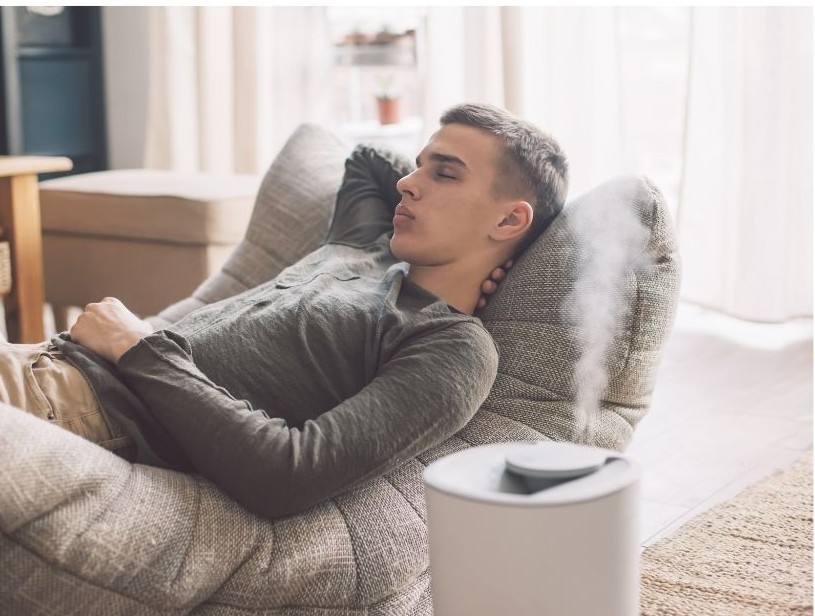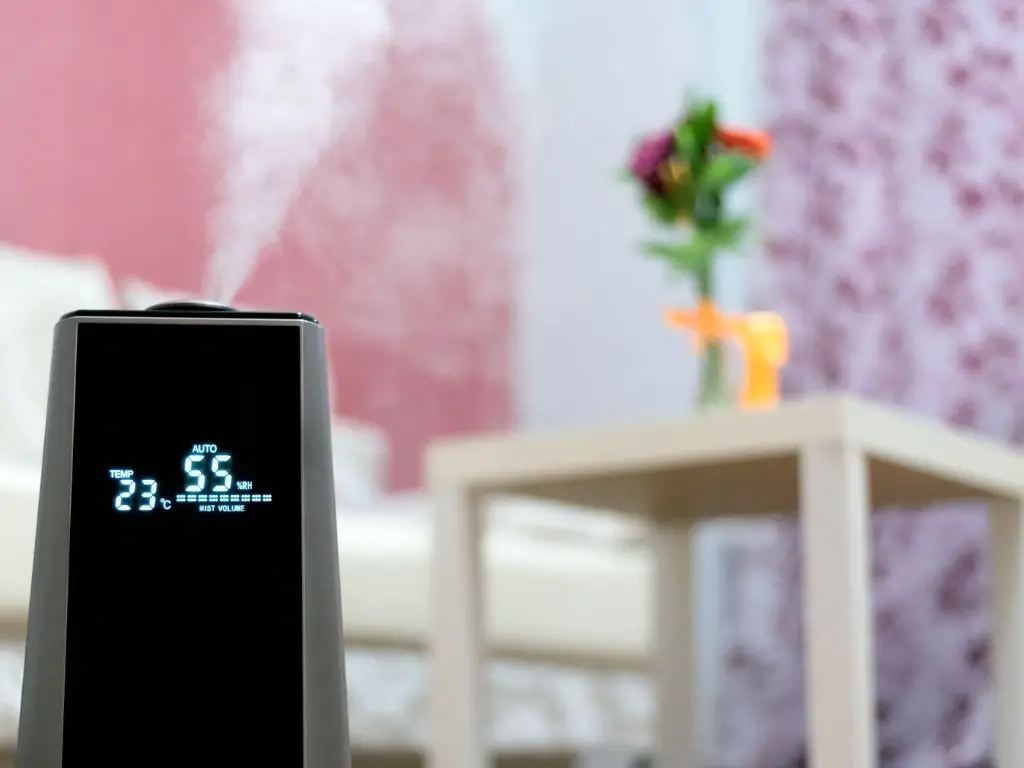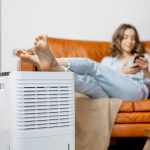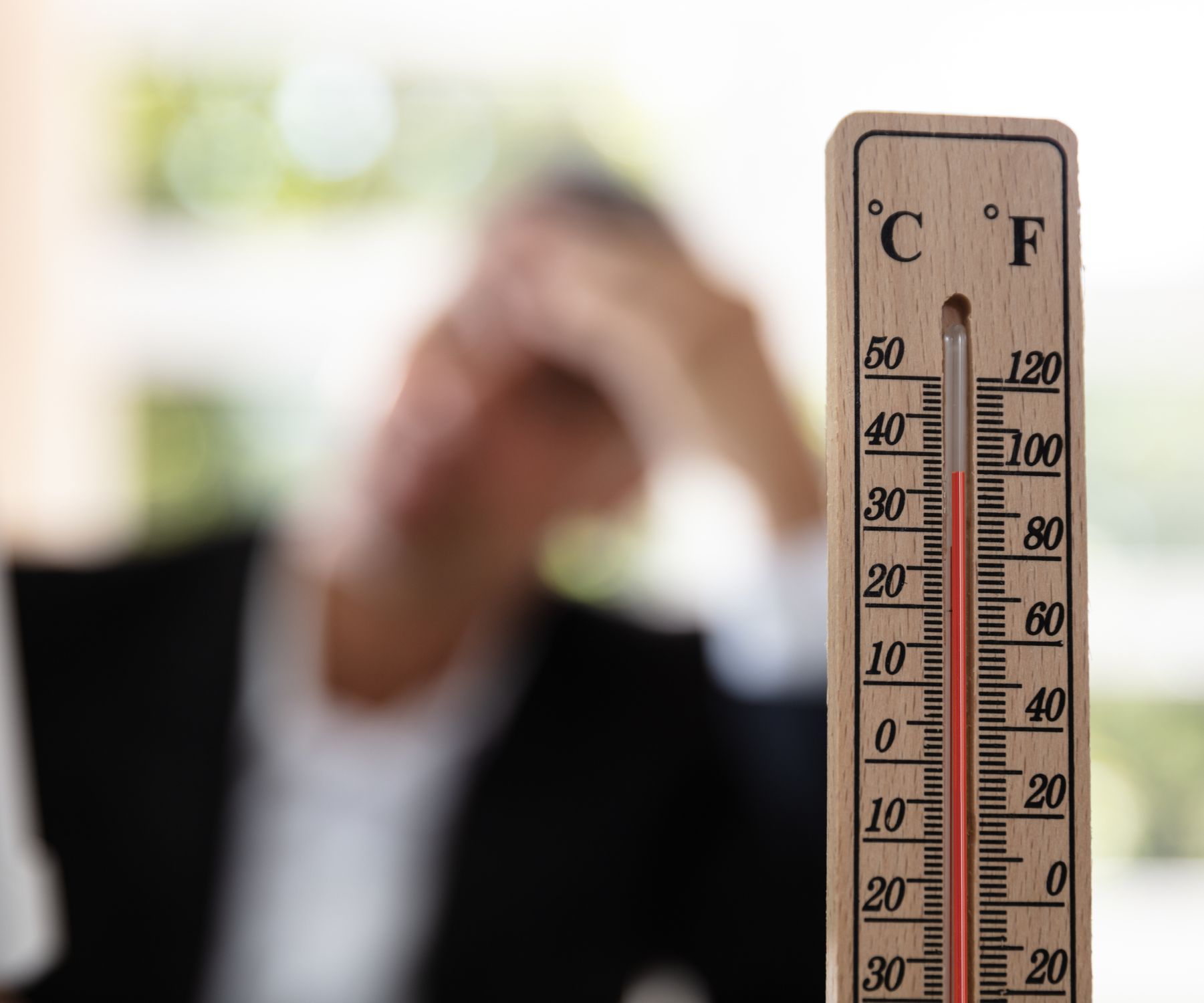Allergies are a topic most of us can identify with.
Allergy symptoms like Itchy burning eyes, sneezing, headaches are all annoyances that we can relate to.
And we can tell you when pollen season has arrived by the way we’re feeling.
But allergies and humidity are not something that we automatically make the connection between.
In fact, you may be surprised to find that the relative humidity, whether high or low, impacts whether or not you may be having allergy and respiratory symptoms.
Low humidity, which would be characterized by a percentage level of 40% and below,
Is the condition known as dry air.
Itchy flaking skin, static electricity, and raw bloody noses, are a regular result of dry air.
High humidity, which would be characterized as humidity 60% or more,
generally results in frizzy hair and a swampy feeling.
But both have elements that cause allergies to flare.
Is a Humidifier Good for Allergies?
A humidifier is a device that adds moisture to the air. It’s that simple.
A humidifier is good for dry air allergies because when there’s a lack of moisture in the air, airborne particles like pollen and mold spores, have nothing to weigh them down and are able to travel further.
On the other hand, when a room has the ideal relative humidity of between 40 and 60 percent, dust particles are not able to float as readily, which makes them not inhaled as easily.
A humidifier also helps moisturize the breathing airways and nasal passages,
bringing a great deal of relief when you are suffering from symptoms like congestion and dry nose, common to colds and allergies.
Humidifier for Allergies
Our top 2 choices for humidifiers are Levoit and Pure Guardian
Levoit is the mother of all humidifiers.
It has all the features you could ask for in a humidifier and it can be used as either a cool mist or warm mist.
Pure Guardian has just about all the same features as the Levoit but it has something Levoit doesn’t.
Self cleaning UV and mold resistant plastic.
The newer generation of humidifiers goes the next step in providing remedies for keeping the humidifier from becoming contaminated with bacteria and mold.
This feature alone may very well outweigh the rest.
When is a humidifier not good for allergies?
A humidifier has a built-in disadvantage in that it has to be cleaned often in order for it not to become a source of airborne allergens itself.
Let me explain a little further,
Because of the nature of the humidifier and the way it works, it requires filling and refilling with water.
Standing water can become contaminated with bacteria in as little as 48 to 72 hours.
Not only the water inside of the basin, but the mouth, the cap, and the filter all have water moving through them and have the capacity to get moldy and covered in bacteria very quickly.
Running a dirty humidifier will take all the germs in the humidifier water and spit them into the air.
Another time when a humidifier is not good for allergies is when the humidity is already high.
A high relative humidity can cause allergies to flare as well as low humidity.
High humidity causes dust mites populations to explode. The humidity in the air is actually what dust mites feed on. Which creates an ideal environment for them to flourish.
Also extra moisture in the air gives mold one of its main components to take root.
And where you have mold you have mold spores traveling through the air, ready to be inhaled.
So when the humidity is high, the last thing you want to do is add more moisture to the air with a humidifier.
A dehumidifier is a device that reduces the moisture in the air.
 Dehumidifier for Allergies
Dehumidifier for Allergies
If you have high humidity but your temperatures are not too high, then a dehumidifier may be the ideal machine you need to bring down the overall relative humidity in your home.
If you’re having high humidity combined with high temperatures then you probably already have a window air conditioner for a central heat and air unit that’s running.
Both of these types of air conditioners dehumidify as they cool. Many units allow for the dehumidifier function to run independently. It’s called dry mode on your settings.
Most allergies in relation to humidity can be avoided by keeping your relative humidity between 40 and 60%.
Hygrometer
But to know what your relative humidity is, you have to have a way to measure it.
A hygrometer is a gauge that does just that. You can buy one pretty cheaply.
But they also come standard on a lot of humidifiers and dehumidifiers.
In fact if you are shopping for either a humidifier or dehumidifier, finding one that has a hygrometer / humidistat will help you keep up with your humidity level and help your appliance keep it at an optimal point.
Levoit comes with a hygrometer/ humidistat as a common feature.
Recap
Allergies and allergic symptoms have more to do with the humidity then you may have ever given it credit for.
Most people can tell you when pollen season has arrived because of how it makes them feel,
But most people do not make the connection between humidity and allergies.
Low humidity, known as dry air, allows allergens as well as germs and viruses to float and travel much further.
Adding moisture to the air with a humidifier weighs down airborne particles so that they settle to the surface faster and stay out of the ambient air that you breathe.
Cool mist from a humidifier also hydrates and gives dry and swollen nasal passages some much needed relief .
High humidity is also a problem for allergy sufferers because excessive moisture in the air breeds higher levels of dust mites. It also facilitates the growth of mold.
A dehumidifier is a better option for reducing moisture when temperatures are mild.
If the weather is hot and humid, refrigerated air conditioners also perform as dehumidifiers. Most even have a dry mode setting that allows you to run your AC as a dehumidifier.





 Dehumidifier for Allergies
Dehumidifier for Allergies





